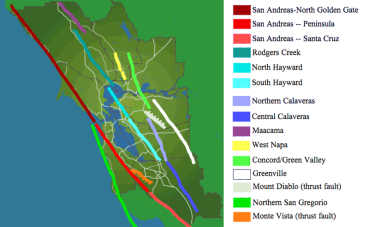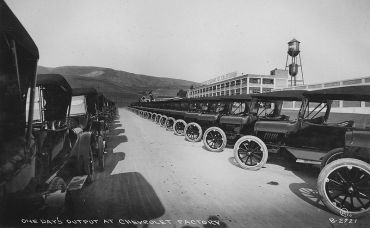HistoryBubbles
Widening & Updates
Leave a Comment
California Proposition 192, the Seismic Retrofit Bond Act (1996)
Was on the March 26, 1996 primary election ballot in California as a legislatively-referred bond act, where it was approved by 60% of voters,against 39% who didn’t find this bond act necessary . Proposition 192 authorized $2 billion for seismic retrofitting, including $650 million for seismic retrofitting of toll bridges. This act played an crucial and vital role for the maintenance and updates to the San Mateo Bridge, providing about 80% of the total costs for improvements of the bridge.
Due to remarkable growing of population in the San Francisco Bay area this bridge with only two lanes each direction was hugely impacted with terrible amounts of constant traffic. Therefore, a project to widen it was ideal for the transportation department.
Proposals to widen the portion of Route 92 from Route 92/880 Interchange to the high-rise portion of San Mateo-Hayward Bridge from 4 to 6 lanes. The scope of the project includes a new 60 foot wide trestle on the north side of the existing trestle, mainline metering and a new mini toll plaza with Electronic Toll Collection. The east approach widening consists of two (2) structures widening, one structure replacement, a new pedestrian/bicycle overcrossing and an additional auxiliary lane. The westbound HOV (car pool lane) lane will be extended 1 mile east to the Hesperian on-ramp.
After the modernization and updates done to the San Mateo-Hayward bridge, it was quite secure and able to efficiently hold more traffic as well as security to all commuters that were concern with the structures safety. After being placed one of the worst roads among the bay it was then ranked in a fairer position obtaining a positive feedback.
To Be Continued…
Fault and Cars…
2 Comments
As a Cal State student I had to take advantage of the resources available on campus. So I went to the school’s library looking for a book that talks about the construction and developments of the San Mateo/Hayward bridge. The first thing I did was to look on the database online, it showed me this particular book called “A report to the Department of Public Works on improvements to San Mateo-Hayward bridge/ Division of San Francisco Bay Toll Crossings, Department of Public Works State of California” which was supposed to be on shelf. However, when I proceeded to search for it I could not find it. I came back the next two days looking for it in 5 different areas. I was getting a little bit frustrated so I went to the front desk asking if this certain book was even in the library;they told me it was, so we went together to look for it, but our attempt was still unsuccessful. We tried to request it from another campus but the system wasn’t letting us. I felt like the whole world was against me…jk.. Anyway, so I was looking where else I could find a book citing my topic, I went to the Hayward public library and found only one book that was really complete had plans, drawing, photos, letters from Caltrans,and subjects such as improvements, impact economically,socially and environmental consequences. But I wasn’t able to check it out, supposedly that book can’t leave the building, which seemed kind of pointless to me. I had to look for another book that might say anything about the bridge, so I checked out a book about Foster City which briefly mentions it.
This book says that the bridge opened the city commercially to the East Bay, also improved transportation along the bay. Even though, council members opposed to the project, they realized it was a necessity to demonstrate urban development of the area.
As I previously discussed seismic activity on the area was a big concern for the project, so I looked the Faults in the area which are the ones causing earthquakes and motion on earth.
The constant seismic activity specially on the area was a huge concern for the management of the project. The San Andreas Fault that runs a length of roughly 810 miles relies across the bay, including South San Francisco and Hayward. The Hayward fault then became and enemy of the bridge.
Upon competition of the project the San Mateo-Hayward bridge opened traffic lines on May 1929 and it was known by then as San Francisco Bay Toll-Bridge being highly used by commuters transporting across the bay. The structure of the bridge was slowly damaged and weakened by the constant motion of the Earth deteriorating the supports and so the concrete. The bridge was once considered the worst evening commute in the Bay Area. Caltrans(California Department of Transportation) ,who were responsible for maintaining the structure safe for the community, replaced some supports and fixed the concrete issues it presented. In October 1967 the bridge reopened traffic, it fulfill the expectations of commuters who were using this bridge on a daily basis.
It was also important to know the amount of cars that by then existed in the Bay Area. As I researched I found that Oakland was as well a very industrial city hosting many industries including automobile companies like Chevrolet and later Ford. Since I cant find the exact number of vehicles that were running during the 1930’s and 1940’s, I assumed there was a considerably amount of cars running throughout and across the Bay. Due to local companies making these cars and also the noticeable improvements in roads and constructions of bridges such as: San Mateo bridge, and couple years later Bay and Golden Gate bridge. It was obvious the existence of automobiles and so that they needed the development of infrastructure to link commuters among the San Francisco Bay Area. 
Ethnic and minority groups
Leave a Comment
So…we were told to include Camarillo’s article to this weeks post. I was thinking and thinking what does the infrastructure and development of pathways on the bay have to do with the ethnic disputes between African American and Latinos and ethnic minorities as a whole in California.
I recall when I used to live Southern California , a town 40 minutes away from Los Angeles, called Moreno Valley, CA. This is a small city in the Riverside county that has a total population of 191,766 of which 51% are Hispanics, the predominately ethnic group, followed by African-Americans adding 25% of population. Even though the difference between these two ethnic groups is quite significant, their conflict was constant. During my high school years there was a lot of confrontation and fights between Mexicans and Blacks, hallways would get crowded as all the students rushed to see them battling. Camarillo’s article reminded me of those times when i witnessed these two ethnic groups fighting.
As we all know San Francisco metropolitan area was one of the most popular destination for immigrants in U.S. The economy in the metropolitan city was stable and attractive. The population was quite diverse, many ethnic groups formed the city and gave it personality. The suburbs of the metropolitan area quickly started to be occupied by refugees from the 1906 earthquake. Is the case of San Mateo as i mentioned before. On the other side of the bay, population in Hayward also increased as many industries settled in. Once these suburbs were occupied by majority of whites; however, blacks, Latinos and other ethnic monirities have established in these areas. “Minority-majority” cities in California have emerged as a new frontier, where African Americans, Latinos, and other non-white groups now find themselves, some for the first time, living together and struggling to coexist and live in peace.
In the article Camarillo talks about three cities in three different metropolitan areas in California. He shows how the population has changed over time, and all the conflicts and struggles society goes through today due to the misunderstanding among cultures.
In April 1930 the population in Hayward was 5,530, about 89% was White Americans, 8.5% were foreign immigrants. Since the 1980’s, to present days this white majority has been decreasing making room for the minorities like African American, Asians, and Latinos to increase in numbers. By the 2010 census the total population of the city of Hayward was 144,186 (this is surprising because i thought Hayward was actually bigger than where i used to live) the majority in the 30’s was down to 34% and minorities like Latinos were up to a 40%, Asians 23% and African American 12%. We see the big shift in population over time.
Moreover, the San Mateo bridge was created to unite the community. Transporting goods and products to either side, allowing relatives to visit their families faster and wasting less diesel, optimal transportation and urban development. (more…)




